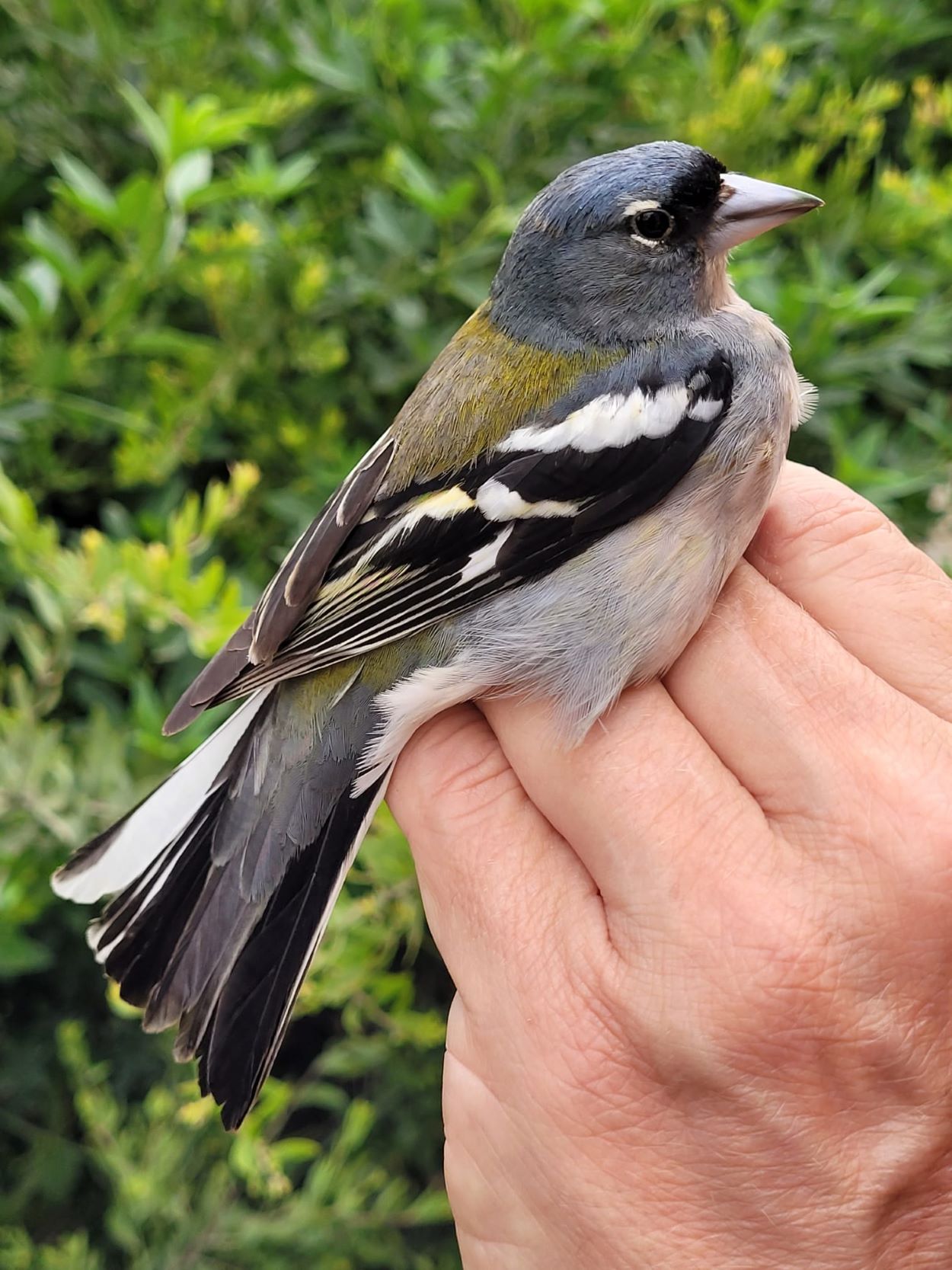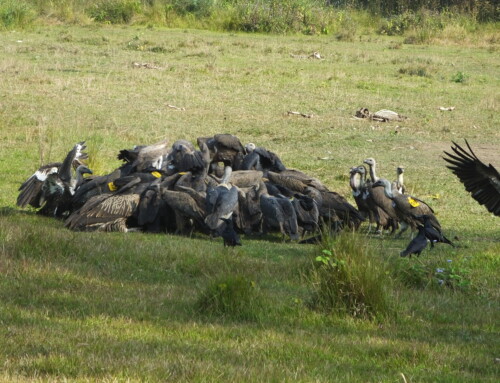
LINKED PAPER
African birds in Iberia: recent colonists, potential colonists and vagrants. Garcia, E. 2024. Ardeola. DOI: 10.13157/arla.71.2.2024.rp1 VIEW
The Iberian Peninsula sees arrivals of wild bird species of African origin with some frequency. Some have so far only appeared as vagrants, from both northern and sub-Saharan Africa. However, a number have gone on to establish breeding populations in the Iberian Peninsula, and further beyond in some cases, and there are others that are potential colonists. A review of occurrences of African species in the Iberian Peninsula has thus seemed timely and can help to identify common factors shared by actual and would-be colonisers alike.
The arrival, establishment and spread within Iberia has been well documented for at least five species: Black-winged Kite Elanus caeruleus (first arrivals c. 1865), Red-rumped Swallow Cecropis daurica (1920), White-rumped Swift Apus caffer (1966), Trumpeter Finch Bucanetes githagineus (1970) and Little Swift Apus affinis (1996). Five other species: Lesser Flamingo Phoeniconaias minor, Atlas Buzzard Buteo cirtensis, Laughing Dove Spilopelia senegalensis, Plain Swift Apus unicolor and House Bunting Emberiza sahari have established a foothold in Iberia and have nested successfully there even more recently but still have only a tiny and localised presence. A further 13 species may be regarded, to varying extents, as possible future colonisers: three of these, Lesser Crested Tern Thalasseus bengalensis, Cream-coloured Courser Cursorius cursor and Common Bulbul Pycnonotus barbatus have already nested in Iberia on rare occasions. Finally, some 30 additional species, most of them of Afrotropical origin, have been reported in Iberia as vagrants and none seem likely to establish Iberian breeding populations in the foreseeable future. The aquatic Afrotropical vagrants, notably Allen’s Gallinule Porphyrio alleni, are all to varying extents intra-African rains migrants that breed in seasonal sub-Saharan wetlands: they migrate southwards as these wetlands dry up, but a few disperse northwards instead, some reaching the Western Palearctic

Figure 1. Red-rumped Swallow Cecropis daurica Andalusia, Spain. By far the most widespread and abundant of the Iberian colonists of African origin © Philip Croft.
The circumstances that favour the arrival of some African species in Iberia are undoubtedly various. At least six of the ten colonists: the kite, swallow, Little and Plain Swifts, dove and bunting, together with the Moroccan Wagtail Motacilla subpersonata, Plain Martin Riparia paludicola and possibly the Pied Crow Corvus albus, have undergone progressive northward range expansion within the Maghreb (Bergier et al. 2022). Hence for these species colonisation (or eventual colonisation) of Iberia may be seen as a continuation of this trend.
A second factor, favouring the appearances of some Afrotropical species, is their tendency to mingle with close relatives that are regular visitors to sub-Saharan Africa as migrants from the Palearctic region. Some individuals of such species have appeared in Iberia by accompanying their European equivalents when the latter return to Europe. This behaviour, termed ‘chaperoning’, accounts for the frequent arrivals across the Strait of Gibraltar of Rüppell’s Vultures Gyps rueppelli and, more rarely, White-backed Vultures Gyps africanus, that have been seen in the company of Eurasian Griffon Vultures Gyps fulvus returning from West Africa in spring. The Lesser Flamingos that have appeared and sometimes nested at Iberian wetlands, and in Camargue, seem highly likely to have associated with Greater Flamingos Phoenicopterus roseus that range between the western Mediterranean south to Mauritania and beyond. A number of other vagrant African raptors and wetland species are also likely to have been chaperoned to Iberia. The few African Chaffinches Fringilla spodiogenys that have recently arrived at Gibraltar have all done so in March and April, perhaps accompanying the many European Chaffinches F. coelebs returning north from Maghrebian winter quarters. In the case of the vultures, the phenomenon became regular at the same time that the Iberian Griffon population increased sharply during the late 20th century, resulting in very many more juvenile Griffons travelling to and from sub-Saharan Africa.
Some species are clearly much more capable of long-distance range expansion, in this case across desert, mountain ranges and the Mediterranean sea, than others. Those that perform regular migratory or altitudinal displacements and so are adapted to long-distance travel, must be better suited to range expansion than those that are strictly resident. Sociability and longevity are also considerations when assessing whether colonisation is possible. Species attracted to wetlands, aerial insectivores that congregate where flying insects aggregate and those that travel in flocks are much more likely to meet conspecifics and settle to breed than those that appear as widely scattered vagrants.
A feature shared by some of the well-established colonists is that they are closely associated with human constructions, whether in the form of towns, villages, farmsteads or such infrastructures as bridges, or in the form of agriculturally modified landscapes. The recent spate of House Buntings on the northern side of the Strait of Gibraltar since 2021 rapidly resulted in successful nesting in Algeciras in 2023 and 2024, very possibly because this bunting is attracted to villages or the outskirts of towns where meetings with conspecifics become more likely. The case of the bunting can be contrasted with that of another Maghrebian species, Moussier’s Redstart Phoenicurus moussieri, where the few that stray to Spain encounter very extensive tracts of their favoured montane habitats where chancing upon another of their kind would be most unlikely.

Figure 2. House Bunting Emberiza sahari Gibraltar. Apparently beginning to colonise southern Iberia after a long period of northward range expansion in North Africa © Robert Perez.
Models of climatic conditions in Europe later in the 21st century (Andrade et al. 2021, Huntley 2019) predict that southern Iberia will become progressively more arid, displacing some of the species that now occur there northwards but perhaps creating niches that North African species especially may be able to occupy. The diversity of semi-desert species of sandgrouse, larks, chats and warblers, among others, in the Maghreb is considerable and some may well become established in Iberia at some future stage, particularly if rising temperatures and even sparser precipitation makes their current habitats less habitable. Of these, the Trumpeter Finch has already colonised arid habitats in Iberia and the Cream-coloured Courser could well follow in the medium term at least.
The rapidity with which some of the changes and trends mentioned above have occurred is astonishing. These are exciting times, and not just for biogeographers.
References
Andrade, C., Contente, J., Santos, J.A. 2021. Climate change projections of aridity conditions in the Iberian Peninsula. Water 13:15. VIEW
Bergier, P., Thévenot, M., Qninba, A., Houllier, J-R. 2022. Oiseaux du Maroc/Birds of Morocco. Société d’Études Ornitologiques de France, Muséum National d’Histoire Naturel, Paris.
Huntley, B. 2019. Consequences of climatic change for distributions. In, Dunn, P.O. & Møller, A.P. (Eds.): Effects of Climate Change on birds. 2nd edition. Oxford University Press, Oxford, UK.
Image credits
Top right: African Chaffinch Fringilla spodiogenys ringed at Gibraltar © Charles Perez.
Blog posts express the views of the individual author(s) and not those of the BOU.
If you want to write about your research in #theBOUblog, then please see here.




